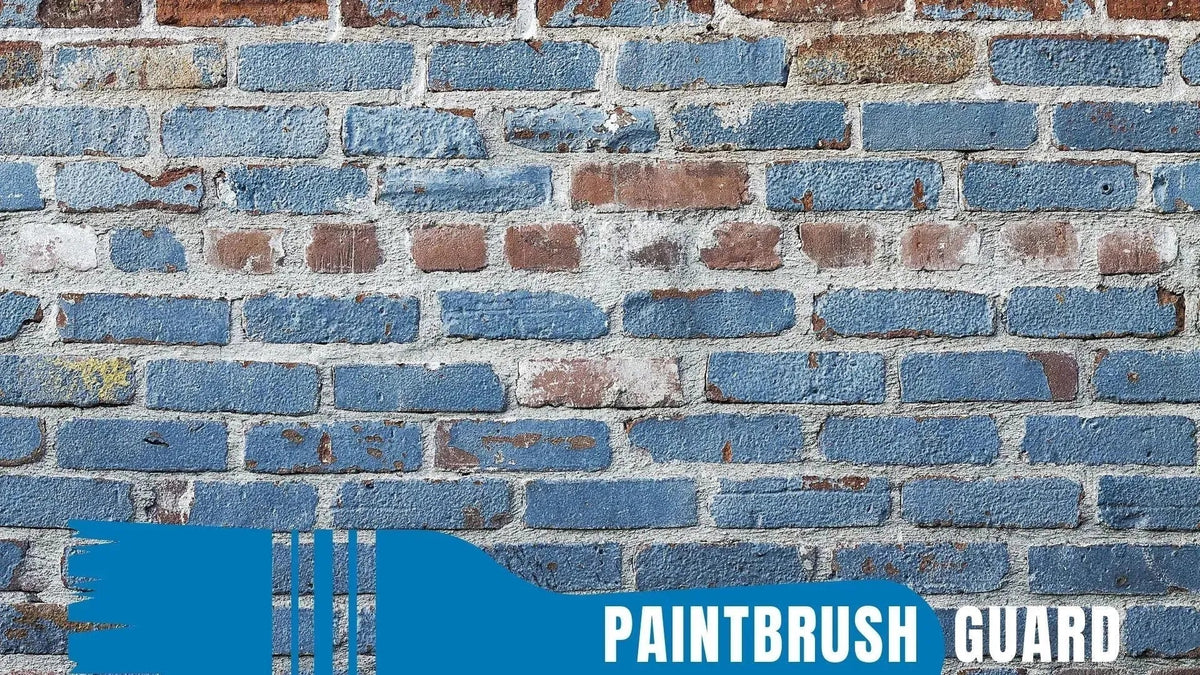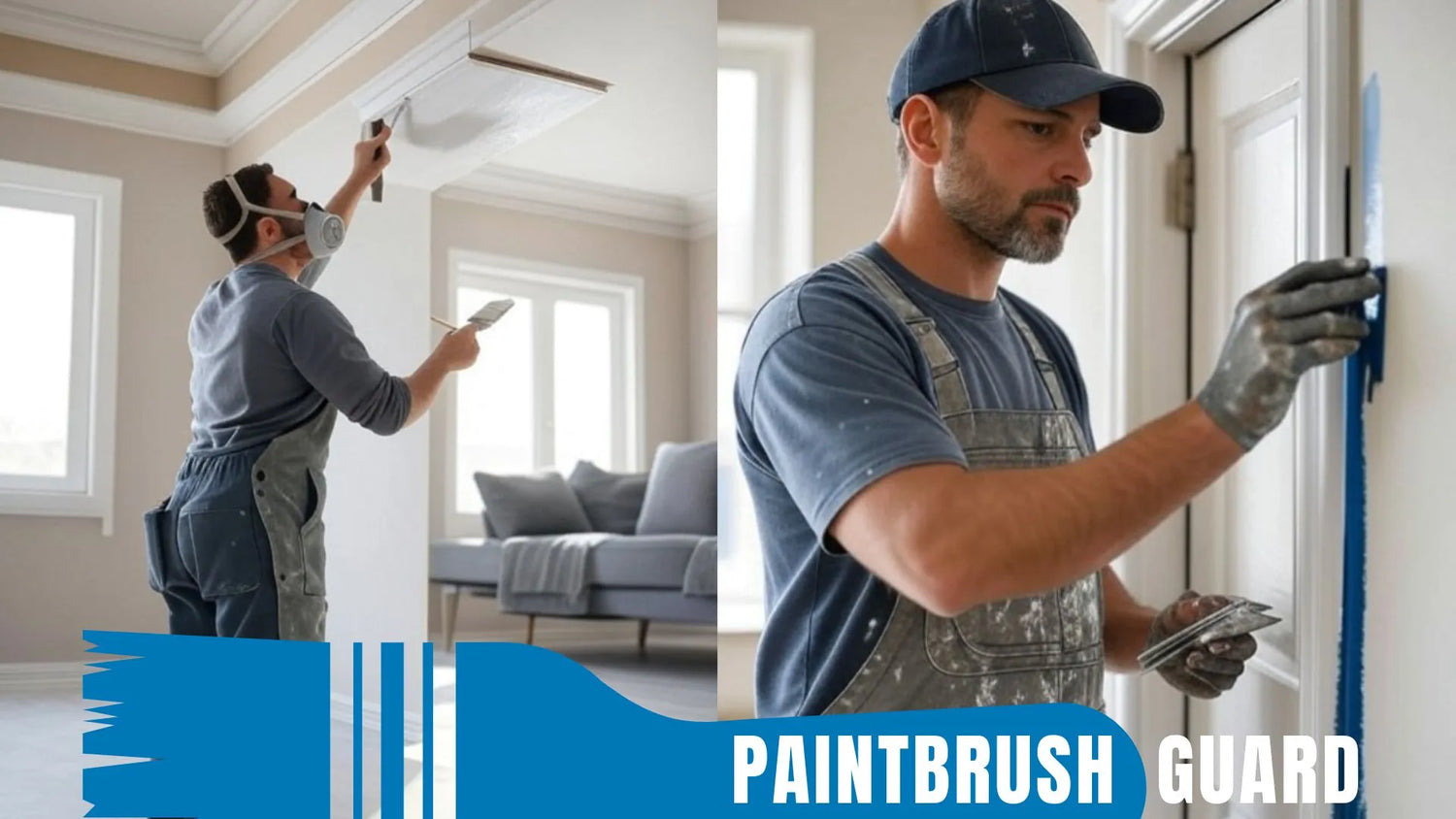
8 Maintenance Tips for Exterior Brick Painting
|
Time to read 9 min
|
Time to read 9 min
Proper Maintenance ensures painted brick exteriors remain vibrant and durable for years. These eight practical tips protect your investment, enhancing exterior brick painting durability against weather and wear. Follow these strategies to keep your brick walls looking perfect.
Read our exterior brick painting guide: This in depth guide covers everything from inspection, priming and painting house brick for a professional finnish.
Maintaining painted brick is crucial to preserve its appearance and protect the underlying surface from environmental stress.
Unlike unpainted brick, painted exteriors require regular care to prevent peeling, fading, or moisture damage, especially with breathable paints used for exterior brick painting.
For instance, a neglected brick facade can develop cracks that trap water, leading to paint failure or brick spalling.
Routine maintenance extends the lifespan of the best paints for exterior house painting, like mineral based or elastomeric formulas, to 10 to 15 years, particularly for painting historic homes.
These eight tips offer practical steps to keep your brick looking vibrant and structurally sound for years.
This article explores what color brick makes a house look bigger, offering insights into brick paint options, color psychology, and practical tips to achieve a larger look.
Regular cleaning prevents dirt, mildew, and pollutants from dulling or damaging your painted brick surface.
Annual washing maintains the paint’s vibrancy and protects against mold growth, which can degrade coatings over time, ensuring exterior brick painting durability.
This task, taking 2 to 4 hours for a 2,000 square foot home, keeps your paint perfect and intact.
This article explores is it better to spray or roll exterior paint on brick, comparing the two methods to guide your decision.
Annual inspections help identify early signs of paint wear, such as cracks, peeling, or fading, before they escalate into costly repairs.
Proactive checks maintain exterior brick painting by addressing issues promptly, protecting the brick from water infiltration and environmental damage.
This 1 to 2 hour task prevents minor issues from becoming major problems.
Touching up small areas of peeling or faded paint preserves the overall look and integrity of your brick exterior.
Quick repairs enhance exterior brick painting Durability by sealing vulnerabilities, preventing moisture from penetrating the brick or mortar.
This 30 minute to 1 hour task keeps your brick looking uniform and protected.
This article explores how long will painted brick last, the key influences on its durability, and practical steps to keep it in top shape.
Keeping trees, shrubs, and vines away from painted brick prevents moisture buildup and physical damage that can compromise paint.
Proper vegetation management supports exterior brick painting by reducing dampness and scratches that lead to peeling or cracking.
This 1 to 2 hour biannual task protects your paint from environmental stress.
Exterior brick painting: This article explores what is the downside of painting brick, shedding light on the challenges of brick painting to help you make an informed choice.
Efflorescence, a white, powdery deposit caused by moisture moving through brick, can damage paint if left untreated.
Addressing it quickly maintains exterior brick painting by preventing moisture related issues that lead to peeling or brick deterioration, especially on historic facades.
This 1 to 3 hour task prevents long term damage to your paint job.
Properly functioning gutters and drainage systems prevent water from pooling against painted brick, reducing the risk of paint failure.
Regular maintenance of these systems ensures exterior brick painting by keeping brick dry and free from water related damage.
This 2 to 3 hour task protects your brick from moisture stress.
This article dives into is it better to paint or stain exterior brick, comparing brick paint and stain to guide your decision.
Applying a breathable sealer every 3 to 5 years adds an extra layer of protection to painted brick, enhancing resistance to moisture and UV rays.
This maintenance step boosts exterior brick paint, particularly for high exposure areas like chimneys or south facing walls.
This 4 to 6 hour task extends your paint’s lifespan significantly.
Storing leftover paint properly ensures you have matching colors for future touch ups, maintaining a consistent look.
This maintenance practice supports exterior brick painting by allowing quick repairs without color mismatches, saving time and effort.
This 30 minute task prepares you for ongoing maintenance.
Tip |
Time Required |
Best For |
Annual Cleaning |
2 to 4 hours |
Removing dirt, mildew |
Yearly Inspections |
1 to 2 hours |
Detecting cracks, peeling |
Touch Up Paint |
30 min to 1 hour |
Minor damage repairs |
Vegetation Management |
1 to 2 hours |
Preventing moisture buildup |
Efflorescence Removal |
1 to 3 hours |
Addressing moisture deposits |
Gutter and Drainage Maintenance |
2 to 3 hours |
Avoiding water damage |
Apply Sealers |
4 to 6 hours |
Extra protection |
Store Paint |
30 minutes |
Future touch ups |
This table outlines Maintenance tasks for painted brick longevity.
Learn more about brick painting:
This article has explored the benefits, drawbacks, and alternatives, helping you determine if painting brick aligns with your goals.
Cleaning painted brick annually is ideal to maintain exterior brick painting. Use a low pressure hose and mild detergent to remove dirt and mildew, taking 2 to 4 hours for a typical home.
For historic brick, clean gently to preserve breathable paint, ensuring no damage to the coating or surface.
Repainting over peeling brick paint is possible but requires thorough preparation. Scrape off loose paint, sand the area, and clean thoroughly before applying a breathable masonry primer and topcoat.
This ensures adhesion and exterior brick paint, taking 2 to 4 hours for small areas, longer for extensive peeling.
Learn more about exterior brick paint types: The wrong paint can trap moisture, damage brick, or peel quickly, leading to costly repairs. Here are key reasons to focus on paint type when painting brick exteriors.
A breathable sealer isn’t always required but enhances exterior brick painting Durability by adding moisture and UV protection every 3 to 5 years.
Apply after cleaning and drying the brick, using a sealer compatible with your paint type, especially for historic brick with mineral based coatings.
This article explains whether you need to prime exterior brick before painting, covering benefits, exceptions, and practical steps for a professional result.
Regular Maintenance is key to achieving exterior brick painting Durability, keeping your painted brick vibrant and protected.
These eight tips, from cleaning and inspections to sealers and paint storage, to ensure your 2025 project withstands time and weather. With tools like the Paintbrush Guard, your brick exterior will shine for years.
Annual cleaning with a low-pressure hose and mild detergent for a historic home’s brick facade removes dirt and mildew, preventing paint degradation. This ensures vibrant color and strong adhesion, extending the paint’s lifespan and maintaining a polished, professional appearance without damage.
Yearly inspections of a brick chimney for cracks, peeling, or efflorescence catch issues early, avoiding moisture damage that leads to spalling. Marking problem areas for quick touch-ups preserves the paint’s integrity, saving time and ensuring long-term durability for exterior surfaces.
The Paintbrush Guard keeps brushes wet during touch-ups on a brick garden wall, saving 15 minutes per break by skipping cleanup. Its vacuum-seal preserves bristle quality, reduces water and solvent use, and supports eco-friendly maintenance for precise, seamless repairs.
Trimming shrubs and vines away from a brick exterior prevents moisture buildup and scratches that damage paint on a patio wall. Maintaining clearance reduces peeling risks, ensuring the paint remains intact and the brick stays protected from environmental stress.
Storing leftover paint in sealed, labeled cans for a brick fence ensures matching colors for future touch-ups, maintaining a consistent look. Kept in a cool, dry place, paint stays usable, simplifying repairs and supporting cost-effective, eco-conscious upkeep without mismatches.

Learn about eco-friendly painting, tips and tutorials on house interior and exterior surfaces, so you can get started with your project without any surprices during or after your painting.

Learn how interior house paint colors influence mood with expert tips on room preference so you can pick the best colors for a harmonious home environment.
We focus on the most popular shades for each interior colors, so you don't miss no matter what color you pick.

Learn how this innovative tool allows you to store paintbrushes without the need for immediate cleaning, offering significant advantages in time savings, water conservation, reduced chemical pollution, and lower costs for supplies.



